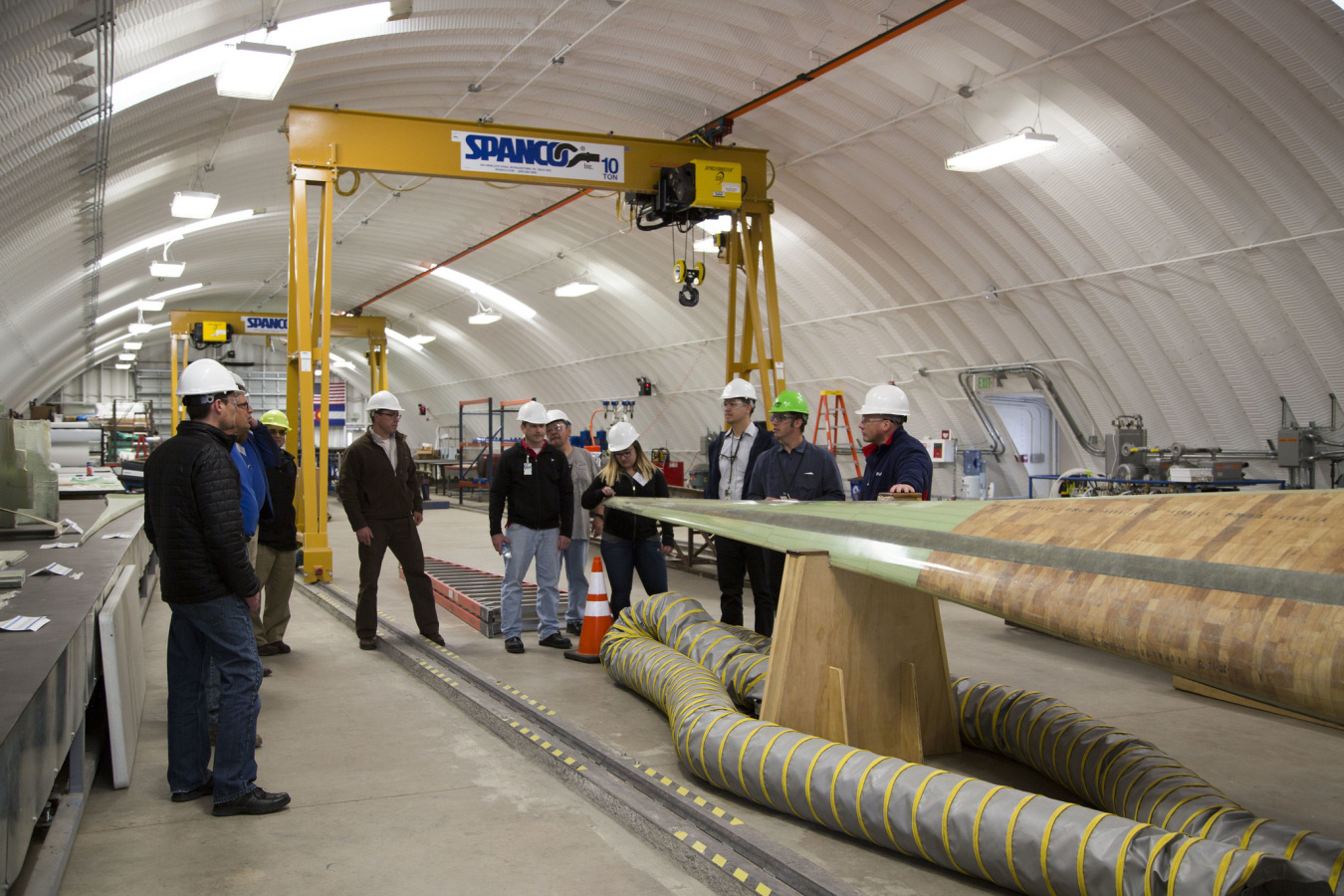Executive Director of Nuvista Light and Electric Cooperative talks about her role in creatively addressing Alaska’s energy challenges.
Office of Indian Energy Policy and Programs
October 30, 2019Change doesn’t happen on its own. It’s led by dedicated and passionate people who are championing innovative solutions to tribal energy challenges. Indian Energy Champions is a U.S. Department of Energy (DOE) Office of Indian Energy blog series spotlighting innovators in Indian energy.

Name: Natalie Hanson
Title/Role: Executive Director, Nuvista Light and Electric Cooperative
How would you describe your role with the Nuvista Light and Electric Cooperative?
Nuvista is the only organization in the Yukon-Kuskokwim (YK) Delta that is solely dedicated to the energy issues of the region. Our primary goal is to lower the cost of energy for the residents of the YK Delta, which is a vast region of western Alaska where each community has its own stand-alone diesel power plant and very high energy costs.
My role as the executive director is to creatively approach energy solutions from different angles—energy efficiency and education, renewable generation, and improved operations and maintenance of the existing equipment.
By fostering relationships with the 56 remote communities in the YK Delta region, we develop an understanding of individual community needs and then try and help them determine the best path forward—there is no “one-size-fits-all” solution. Nuvista’s role includes partnering with local entities like tribes, village corporations, and municipalities to secure funding in order to help communities reach their energy goals.
Tell us about your larger role in promoting tribal energy development in your region of Alaska.
Because Nuvista has its finger on the pulse of what is desired and/or needed in YK Delta communities, when opportunities for tribal energy development are presented, we have a sense of where that will likely fit best and can bridge the gap between the potential funding agency and the community.
What do you find most motivating or inspiring about the work you do as executive director of Nuvista?
We have always understood that the people of the YK Delta are reliant on fossil fuels. Since its inception, Nuvista has focused on reducing that dependence in whatever way possible because it makes it incredibly challenging for our people to get ahead.
High energy costs impact everything in a community, and they stifle economic development, creating a never-ending cycle. Meeting and forming relationships with the determined, independent, self-sufficient people of the YK Delta region is the most inspiring and motivating part about the work we do.
How do you view the current energy challenges and opportunities in the YK Delta?
Energy challenges in western Alaska are tremendous, but not insurmountable.
Because of exorbitant transportation costs, remoteness, and small populations, many projects are cost-prohibitive. However, the high cost of energy may be seen as an opportunity, because it creates a demand to invest in energy efficiency or newer technologies that will pay off in time while also reducing energy and fossil fuel dependence and consumption.
Read a recent Alaska Public Media article about Nuvista’s recently awarded DOE-cofunded project.
Describe a project you’re working on that is helping address the energy challenges in the region.
As I mentioned earlier, our focus is on reducing dependence on fossil fuels in YK Delta communities. By accomplishing that, we will see a reduction in energy costs and an improvement in the self-determination and self-sufficiency of communities.
Kwethluk is one example. We saw an opportunity in Kwethluk to build a wind generation and battery storage project that will help in two significant ways: improve energy resilience and offset diesel consumption of the community.

Natalie Hanson (center) and other representatives from eight intertribal technical assistance provider networks selected through a 2016 Office of Indian Energy grant toured the National Wind Technology Center in Colorado. Photo from Devonie McCamey, NREL
You participated in the National Renewable Energy Laboratory’s (NREL) Energy Execs program recently. As an Alaska Energy Exec, what were your top takeaways? Did the experience inspire any new ideas or actions?
My main takeaway from participating in the NREL Energy Execs program was the realization that rural Alaska requires unique solutions and many of our struggles and creative solutions are not known or well-understood by those outside of rural Alaska.
What’s your vision for the future of energy in rural Alaska?
My vision for rural Alaska is that every community will have affordable, sustainable energy.
How might the projects you’re working on now—and/or other proposed or potential milestones on the road to that vision—impact people’s lives?
By decreasing the amount of money individuals and businesses are spending on energy, we can ensure those funds are available for other community needs. Individual community members can purchase gas or maintain their boats or snow machines instead, stimulating the local economy and giving them more opportunities to practice subsistence and put food on the table for their family. With decreased energy bills for businesses, prices for goods and services can be lowered, resulting in a more reliable customer base. Reducing the cost of energy impacts people’s lives significantly and on a day-to-day basis.
What do you see as being necessary to bring about meaningful change?
While we implement big changes to the energy solutions in rural Alaska, it is important that we bring the workforce along with us. We need to ensure that facilities and equipment will be understood and well taken care of so projects can have the maximum positive impact on the community.
Learn more about the Office of Indian Energy’s work in Alaska.

